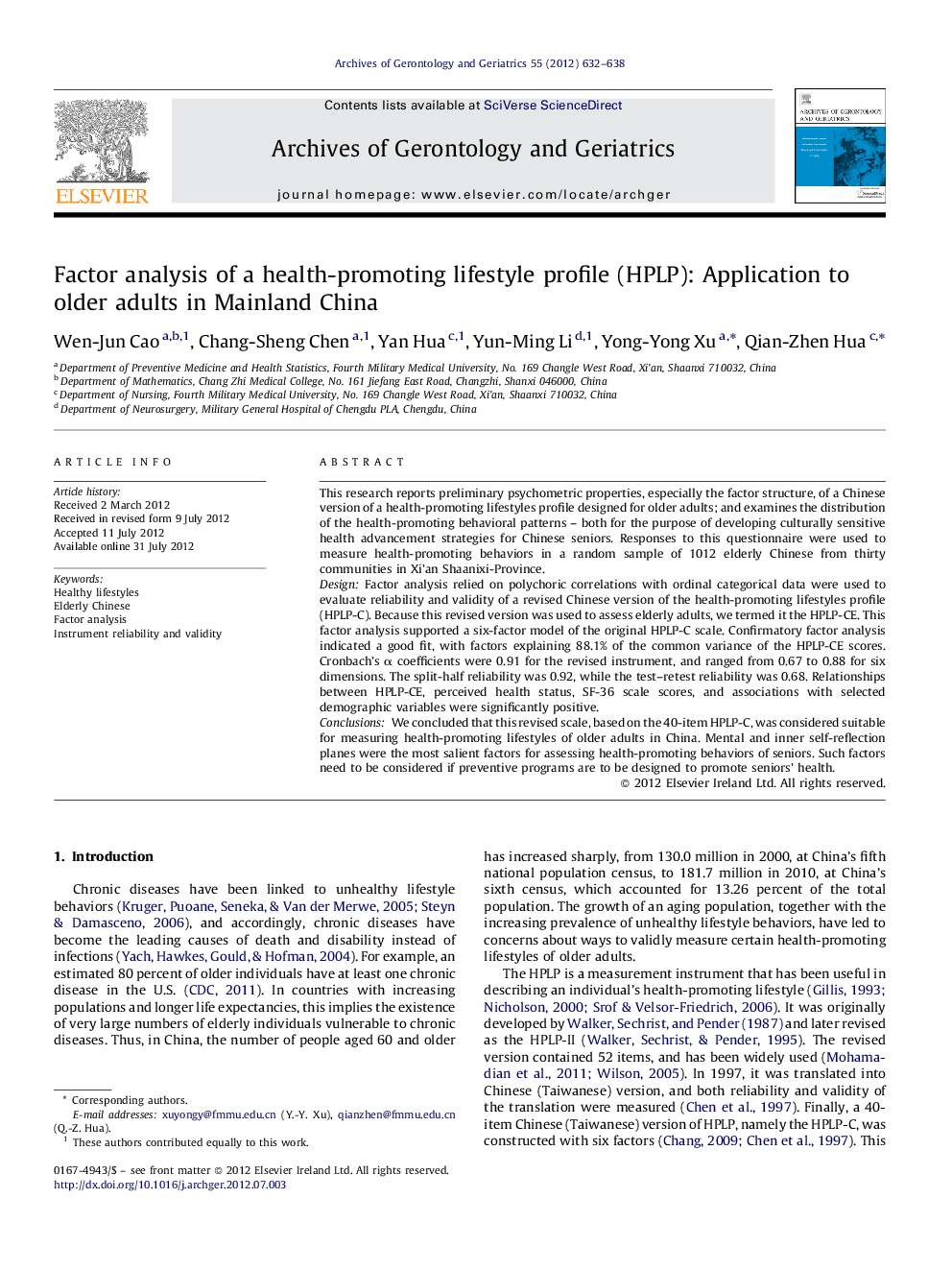| Article ID | Journal | Published Year | Pages | File Type |
|---|---|---|---|---|
| 1903640 | Archives of Gerontology and Geriatrics | 2012 | 7 Pages |
This research reports preliminary psychometric properties, especially the factor structure, of a Chinese version of a health-promoting lifestyles profile designed for older adults; and examines the distribution of the health-promoting behavioral patterns – both for the purpose of developing culturally sensitive health advancement strategies for Chinese seniors. Responses to this questionnaire were used to measure health-promoting behaviors in a random sample of 1012 elderly Chinese from thirty communities in Xi’an Shaanixi-Province.DesignFactor analysis relied on polychoric correlations with ordinal categorical data were used to evaluate reliability and validity of a revised Chinese version of the health-promoting lifestyles profile (HPLP-C). Because this revised version was used to assess elderly adults, we termed it the HPLP-CE. This factor analysis supported a six-factor model of the original HPLP-C scale. Confirmatory factor analysis indicated a good fit, with factors explaining 88.1% of the common variance of the HPLP-CE scores. Cronbach's α coefficients were 0.91 for the revised instrument, and ranged from 0.67 to 0.88 for six dimensions. The split-half reliability was 0.92, while the test–retest reliability was 0.68. Relationships between HPLP-CE, perceived health status, SF-36 scale scores, and associations with selected demographic variables were significantly positive.ConclusionsWe concluded that this revised scale, based on the 40-item HPLP-C, was considered suitable for measuring health-promoting lifestyles of older adults in China. Mental and inner self-reflection planes were the most salient factors for assessing health-promoting behaviors of seniors. Such factors need to be considered if preventive programs are to be designed to promote seniors’ health.
